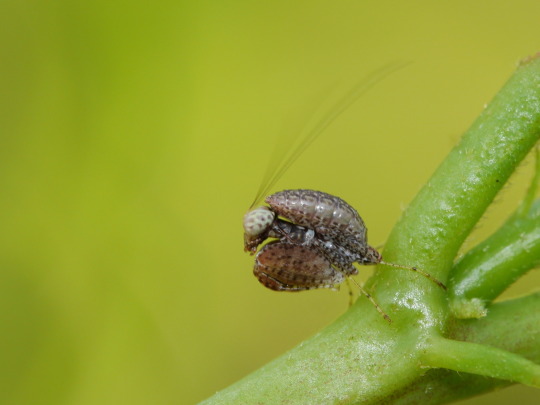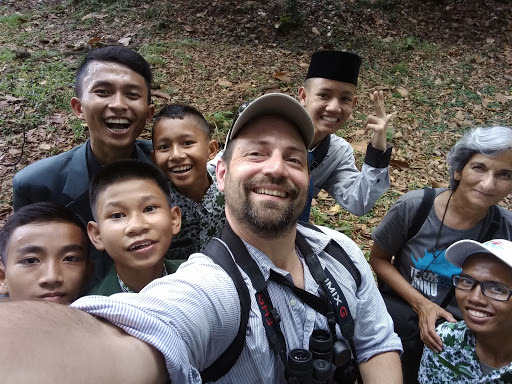Observation of the Week, 5/4/17

This Hestiasula mantis, seen by @muir in Indonesia, is our Observation of the Day!
“My work takes me to a lot of interesting nature these days,” says Matt Muir. “I'm proud to be a biologist for the US Fish and Wildlife Service in our international program. We help partners in other countries conserve and recover their wildlife populations, and have a huge network of field projects trying to accomplish the near-impossible in some very difficult settings. Although I usually work in central Africa, this project was a threats assessment for two national parks in Sumatra that are important refuges for Sumatran tigers and rhinos.” On his journey, Matt was also able to meet up with iNatters @dewichristina “(who is awesome), and was traveling with the amazing @stsang.”
While the megafauna may have brought him to Indonesia, Matt is also fascinated by smaller organisms, especially after having moved from Alaska, where he was born and raised, to the east coast of North America. “I had to recalibrate my enjoyment of nature from wilderness to appreciating the small things,” he explains. “So it's funny that one of the most charismatic critters I found [on this trip] was on my first morning in Indonesia in the hotel garden. Lesson is keep your eyes open everywhere!”

At first, Matt couldn’t figure out what he was looking at, thinking at first it was a pair of beetles. “I was looking through my macro lens, trying to figure out what the heck I was looking at, when it ‘boxed’ me [above], displaying one dark forearm, then the other. My friend Mini [pictured below, with Matt] fell in love, and had me show the mantid to people across southern Sumatra. Glad to see now that it's getting some global attention!”
With their large eyes, articulated neck, and “arm-like” forelimbs, mantids often come off as more personable to us humans than other insects, but all three of those features are fantastic adaptations for a predator. Mantids are visual hunters, so their large eyes help them spot prey, whereas their flexible necks - rare in the insect world - help them look around while not moving their bodies and betraying their camouflage. And of course those famous raptorial forelegs allow mantids to catch prey then hold it while they dine.

As an avid iNat user (over 14,000 observations and over 3,000 identifications), Matt says that not only has iNat caused him to get more field guides and camera equipment, it’s changed how he sees nature:
When I travel, I think I look for more opportunities to find wildlife that's new to me. And post-trip, iNat extends my enjoyment of being outside. In addition to tapping into the identification expertise of the iNat community, I love to search through the observations page to see where else I saw a species, how my observation compares to the overall distribution, and use the species page to check seasonality etc. I sort of think of iNat as steroids for natural curiosity.
I think a lot about how iNat can be a more useful tool for wildlife conservation in the future, so I also try to record both common and uncommon wildlife. Our great species conservation challenge is keeping common things common, and alleviating human pressure on rare stuff, and I hope iNat will contribute to that goal one day.
- by Tony Iwane
- If you were thinking Hestiasula mantids are just as cute in motion as they are in photos, well, you were right.
- Here’s some information about Sumatran tigers and rhinos from the IUCN.





Comentários
Adicionar um Comentário